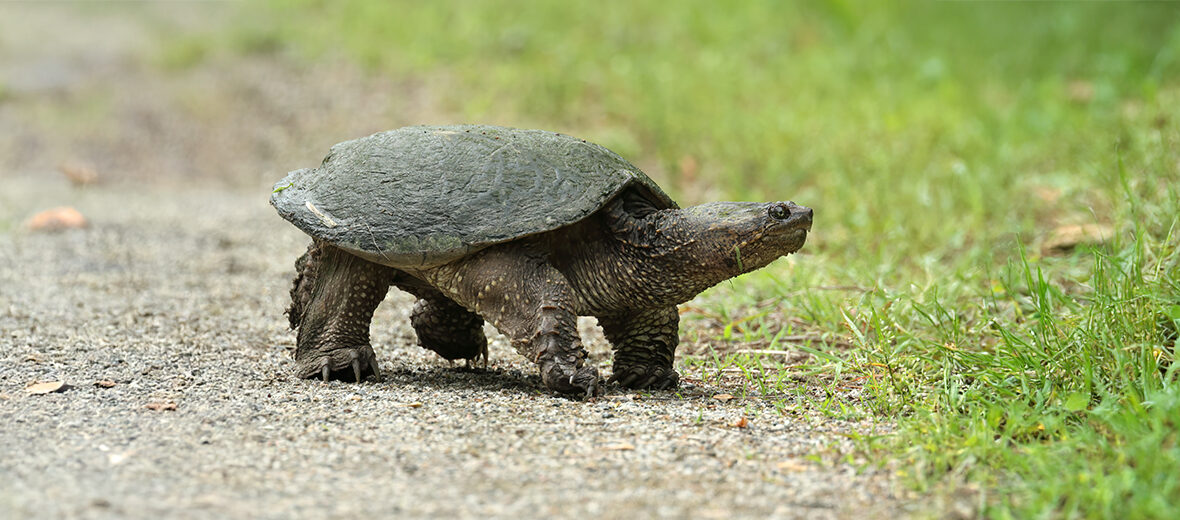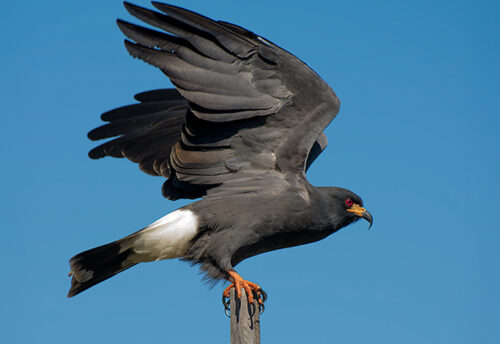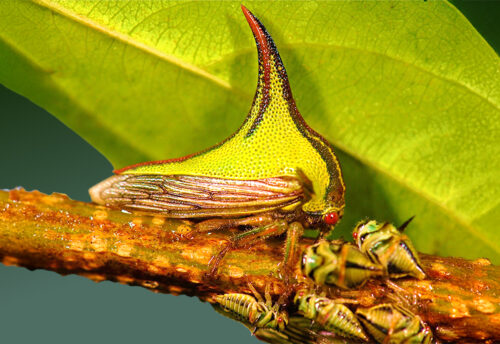
The common snapping turtle, aka northern snapping turtle, can be found throughout southeastern Canada and most of the United States. These turtles are renown for their defensive and combative temperament. They face the threats of habitat loss at the hands of residential and commercial developments; roads and railroads, that divide their territories and can result in vehicle strike (being hit by vehicles); overfishing; over-harvesting of their eggs; and pollution, which fouls their water and can result in poisoning as well as infertile eggs. However, they are abundant enough to be listed as Least Concern by the IUCN. Their populations are listed as stable. Enjoy Critter Science’s 1,700th critter article!
First the Stats…
Scientific name: Chelydra serpentina
Weight: Up to 75 lbs.
Length: Up to 28.5 inches
Lifespan: Up to 100+ years
Now on to the Facts!
1.) While on land, they can be very defensive. In the water, they typically flee when approached.
2.) These turtles have a highly developed sense of smell.
3.) They inhabit a variety of permanent bodies of water, including brackish (partially saline) estuaries.
4.) While submerged, they can hold their breath for up to 50 minutes at a time.
5.) Aquatic invertebrates, frogs, salamanders, newts, fish, lizards, snakes, water birds, carrion (dead animals), and aquatic vegetation are all on the menu.
But wait, there’s more on the common snapping turtle!
6.) Adults have few predators, sans alligators, coyotes, black bears, and alligator snapping turtles. But their young and their eggs are preyed on by crows, American minks, skunks, foxes, raccoons, herons, bitterns, hawks, owls, fishers, American bullfrogs, large fish, snakes, and otters.
7.) Recent data supports the theory that common snapping turtles can sense the Earth’s magnetic field, which could also be used for traveling to other bodies of water.
Did you know…?
The bite force of common snapping turtles is approximately 126.8 psi, or 564 Newtons.
8.) Mating season lasts from April – November.
9.) Females can hold onto sperm deposits for several seasons utilizing what she feels necessary when the time arrives. This is among the longest example of sperm cell retention known, with the Javan wart snake being number 1, at 7 years!
10.) After digging a hole in sandy substrate, some distance from the water, the female can lay up to 80 eggs in a single season.
But wait, there’s still more on the common snapping turtle!
11.) Incubation time can be up to 18 weeks, and is dependent upon ambient (surrounding) temperature.
12.) These turtles do not hibernate but remain active even underneath ice sheets in the water.
Did you know…?
Common snapping turtle hatchlings have recently been discovered making sounds before exiting the nest onto the surface, a phenomenon also known from species in the South American genus Podocnemis as well as the Ouachita map turtle. These sounds are mainly “clicking” noises, but other sounds, including those that sound a bit like a “creak” or rubbing a finger along a fine-toothed comb, are also sometimes made.
13.) The external temperature can dictate the sex of the hatchling. Warmer and colder temperatures yield females, whereas midline temperatures yield males.
14.) In the northern parts of their range common snapping turtles don’t breathe for more than 6 months due to ice covering their hibernating site. These turtles therfore get oxygen by pushing their head out of the mud and allowing gas exchange to take place through the membranes of their mouth and throat, otherwise known as extrapulmonary respiration.
15.) If they can’t get enough oxygen through this method they start to utilize anaerobic pathways, burning sugars and fats without the use of oxygen. The metabolic by-products from this process are acidic and can create rather undesirable side effects by springtime, aka oxygen debt.
But wait, there’s still a tad more on the common snapping turtle!
16.) As mentioned, when encountered on land, they can be quite fierce. However, when encountered in the water, they will often display curiosity and sometimes bump the leg(s) of a swimmer. But if approached in the water, they often flee to the safety of the muddy substrate or a grassy patch.
17.) The common snapping turtle is a traditional ingredient in turtle soup. However, eating large quantities can become a health risk due to the potential concentration of toxic environmental pollutants in the turtle’s meat.
18.) Their claws are as sharp as a bear’s and are used for tearing apart prey for consumption.
Now a Short Common Snapping Turtle Video!
Be sure to share & comment below! Also, check out the Critter Science YouTube channel. Videos added regularly!
Want to suggest a critter for me to write about? Let me know here.
Some source material acquired from: Wikipedia & IUCN
Photo credit: Cephas




